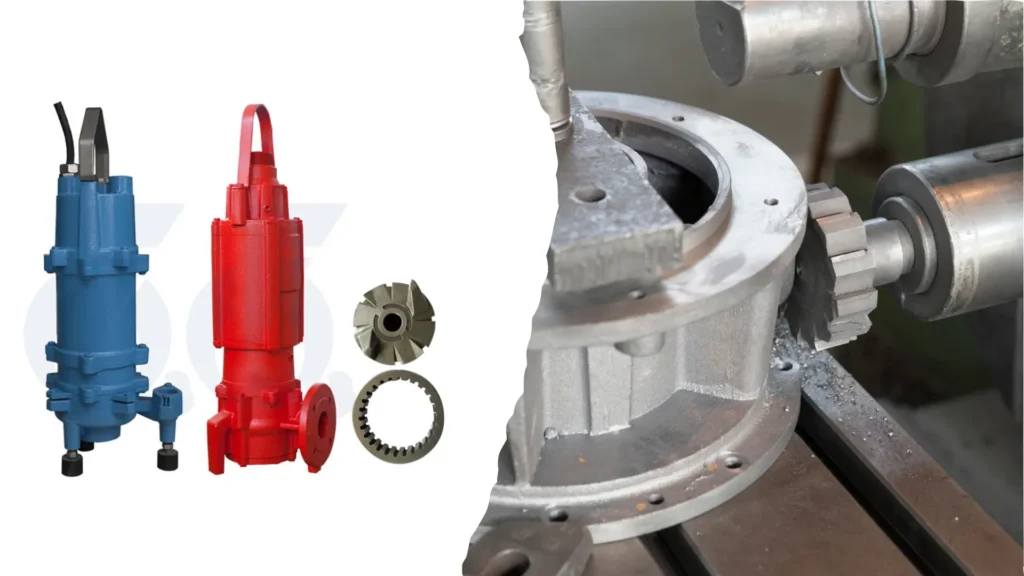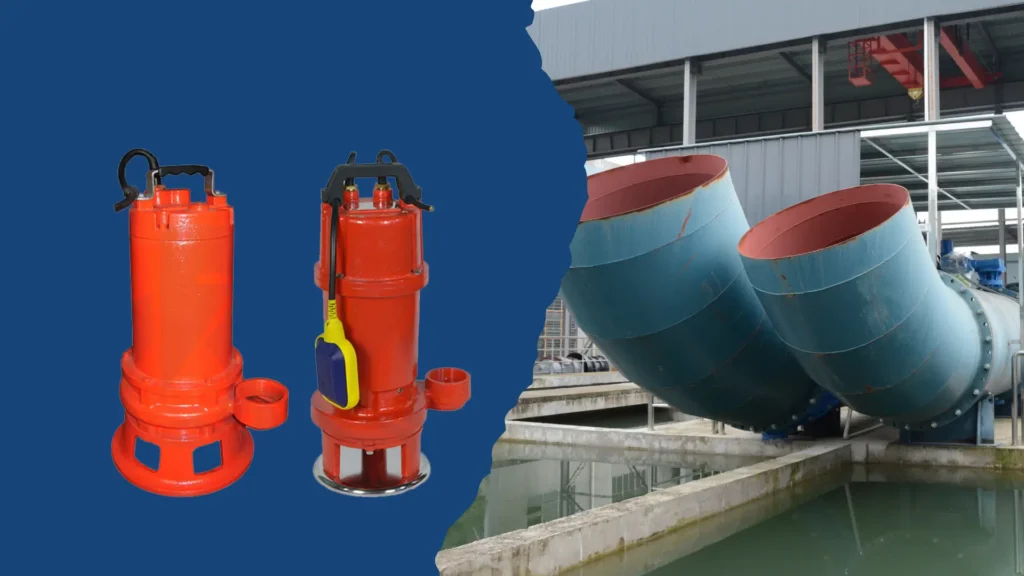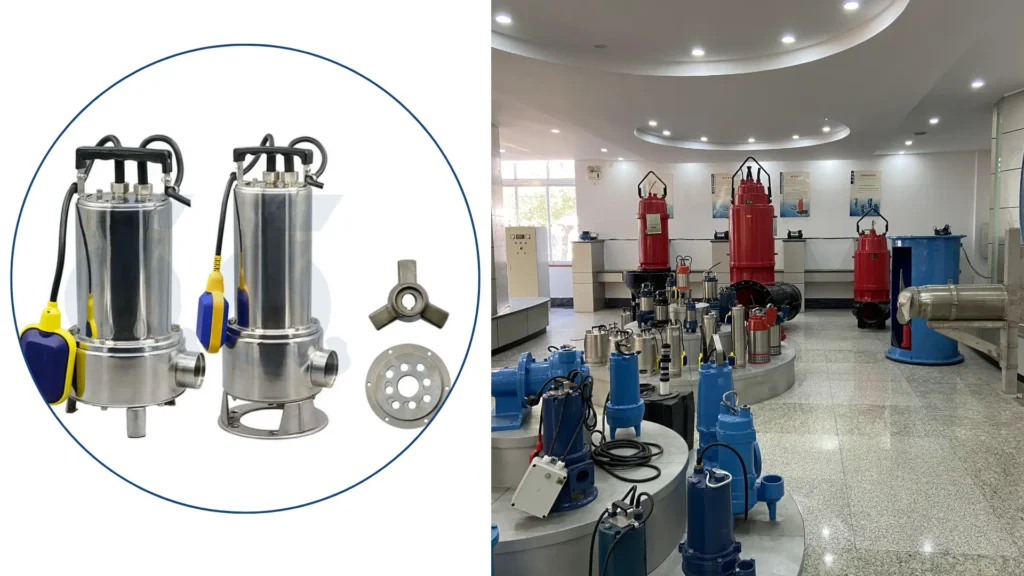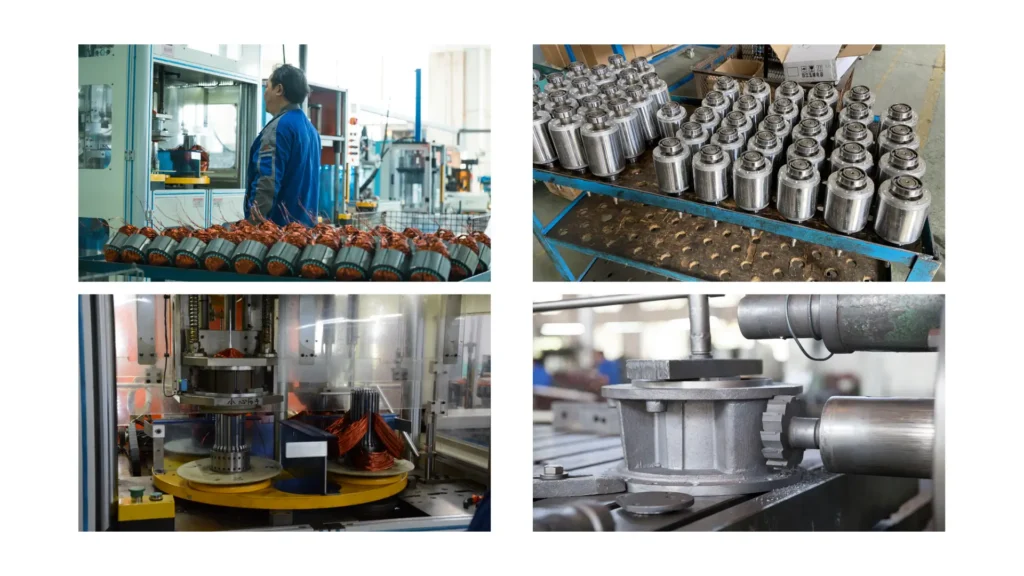Winterizing your submersible stainless steel pump is essential to prevent freezing damage, corrosion, and costly repairs.
Whether you use it for irrigation, water supply, or industrial applications, proper winterization ensures longevity and reliable performance when spring returns.
This guide walks you through the key steps to protect your pump during cold weather—keeping it safe until the next season.
Why Is Winterizing a Stainless Steel Pump Necessary?
Prevents Freezing Damage
Winterizing a stainless steel pump is essential to protect it from freezing damage.
When water remains trapped inside the pump or the connected pipes, it can freeze as temperatures drop.
The freezing water expands, which can result in cracks and significant damage to the pump components.
This not only leads to costly repairs but can also necessitate complete replacement if the damage is extensive.

Reduces Corrosion Risk
Another critical reason for winterizing is to reduce the risk of corrosion.
Even though stainless steel is known for its resistance to rust, stagnant water and moisture can create conditions that promote corrosion.
Over time, any leftover water can lead to the development of rust spots, compromising the integrity of the pump.
Avoids Electrical Issues
Cold weather can also pose risks to the electrical components of a pump.
When temperatures drop, seals, wiring, and motor insulation can become brittle and may deteriorate over time.
This deterioration can lead to electrical failures, which can disrupt the operation of the pump and lead to further complications or costly repairs.
Winterizing helps safeguard these electrical components, ensuring that they remain functional when needed.
When Should You Winterize Your Pump?
Before First Freeze
Timing is crucial when it comes to winterizing your pump. It’s advisable to begin the winterization process before the first freeze sets in.
Specifically, this means starting preparations when temperatures consistently fall below 40°F (4°C).
Taking action at this stage helps ensure that the pump is adequately protected before cold weather can cause any potential damage.
After Last Seasonal Use
Another important aspect of the winterization timeline is to perform the procedure after the last seasonal use of the pump.
It’s essential not to delay this process, as waiting too long can expose the pump to unexpected cold snaps.
Early preparation is key to preventing damage, so as soon as you finish using the pump for the season, it’s wise to begin winterizing it to avoid any complications later on.
Based on Local Climate
The timing for winterizing should also be adjusted according to your local climate conditions.
If you live in an area known for unpredictable winters, it’s essential to be proactive and start the winterization process earlier than usual.
Understanding the specific weather patterns in your region can help you determine the best time to winterize, ensuring your pump is ready to withstand any unexpected freezing temperatures.

How Do You Drain the Pump and Piping?
Turn Off Power Supply
Ensuring safety during the winterization process begins with disconnecting the power supply to the pump.
This step is crucial to prevent any accidental electrical shocks or operational hazards while you are servicing the equipment.
Always make it a priority to turn off the electricity before attempting any maintenance tasks, including draining the pump. This precaution protects both you and the equipment from potential accidents.
Remove Pump from Water Source
Next, it’s important to remove the pump from its water source, if feasible. This could involve extracting the pump from wells, tanks, or ponds.
Taking the pump out of the water source allows for easier access to all components and ensures that you can thoroughly drain any remaining water.
Removing the pump not only simplifies the winterization process but also helps you inspect it for any signs of wear or damage that may need attention before the next season.
Flush and Drain All Water
Once the pump is disconnected and removed, the next step is to flush and drain all residual water.
This can be accomplished using compressed air to blow out any remaining water from the pipes and chambers. Alternatively, gravity can be utilized to ensure that all water is fully drained.
Thoroughly clearing out any trapped water is essential to prevent freezing and damage, so take the time to ensure that every part of the system is completely dry before winterizing.
And More:
The Best Type of Submersible Pump Depends on Specific Needs
Should You Use Antifreeze for Winterization?
Food-Grade Propylene Glycol for Potable Systems
When considering antifreeze options for winterization, food-grade propylene glycol is an excellent choice for potable water systems.
This type of antifreeze is safe for drinking water applications and is also environmentally friendly, making it a practical solution for homeowners who want to ensure safety while protecting their plumbing.
Using food-grade propylene glycol helps prevent freezing without compromising the quality of the water supply.

Non-Toxic RV Antifreeze for Non-Potable Pumps
For non-potable applications, such as irrigation and industrial use, non-toxic RV antifreeze is a suitable option.
This type of antifreeze is effective in preventing freezing in systems where water is not intended for drinking.
It is designed to be safe for seals and components, ensuring that it doesn’t cause any damage while providing the necessary protection against cold temperatures.
Using non-toxic RV antifreeze helps maintain the integrity of the pump and its components throughout the winter months.
Avoid Automotive Antifreeze
It is crucial to avoid using automotive antifreeze in any pump systems.
Automotive antifreeze contains toxic chemicals that can damage pump components and pose serious health risks if they contaminate water supplies.
Always choose appropriate products specifically designed for your pump’s application to ensure safety and performance.
How Do You Protect the Pump Motor?
Inspect Seals and O-Rings
Regularly inspecting seals and O-rings is essential for maintaining the integrity of the pump motor.
Worn-out seals can allow moisture to enter the motor housing, leading to potential electrical failures or corrosion.
Replacing these components at the first signs of wear is crucial to ensuring a tight seal and preventing moisture ingress.
This simple step can significantly extend the life of the pump motor and enhance its performance.
Apply Silicone Grease to Connections
Applying silicone grease to electrical connections is another effective way to protect the pump motor.
This grease acts as a barrier against oxidation and moisture, which can cause electrical contacts to corrode over time.
Regular maintenance of these connections can lead to improved efficiency and longevity of the pump motor.
Store in a Dry, Covered Location
If the pump is removed from its operational environment, proper storage becomes vital.
Keeping the pump in a dry, covered location, such as a frost-free shed or garage, helps protect it from harsh winter conditions.
This storage method not only shields the pump from freezing temperatures but also prevents exposure to moisture, which could lead to corrosion or damage.
Ensuring that the storage area is clean and dry will contribute to the pump’s overall health and readiness for future use.
Also Read:

What If the Pump Stays Submerged?
Use a De-Icer or Aerator
When a pump remains submerged in a pond or well, using a de-icer or aerator can be highly beneficial.
These devices help prevent ice formation around the pump, ensuring that it remains functional during winter months.
Investing in a de-icer or aerator can significantly improve the pump’s reliability in cold conditions.
Check for Proper Insulation
Ensuring that well casings or enclosures are properly insulated is critical when dealing with submerged pumps. Insulation helps maintain a stable temperature around the pump, reducing the likelihood of freezing.
Checking for any gaps or weaknesses in the insulation is essential, as cold air can infiltrate and lead to ice formation.
Adequate insulation not only protects the pump but also enhances its overall efficiency in maintaining water flow during winter.
Monitor Water Level
Monitoring the water level is important for maintaining the operational integrity of a submerged pump.
Low water levels can increase the risk of freezing, as less water means less thermal mass to retain heat.
Keeping an adequate water depth ensures that the pump is surrounded by enough liquid to minimize the chances of freezing.
Regularly checking and adjusting the water level can help prevent damage to the pump and ensure its continued functionality during colder months.
How Do You Prepare for Spring Reactivation?
Inspect Before Reinstalling
Before reinstalling the pump for spring use, conducting a thorough inspection is essential.
Checking for cracks, corrosion, or damaged wiring helps identify any issues that could affect the pump’s performance.
During this inspection, look closely at seals and connections for signs of wear.
Addressing any problems at this stage ensures that the pump will operate efficiently and safely when reactivated, preventing potential failures during peak usage.

Prime the Pump Properly
Properly priming the pump is a critical step in preparing for spring reactivation.
Ensuring that there are no airlocks is necessary for optimal performance, as air trapped in the system can hinder water flow.
Filling the pump with water until it runs smoothly is essential for creating the necessary vacuum for operation.
Taking the time to prime the pump correctly allows for a seamless startup, reducing the risk of damage and ensuring that the system functions as intended.
Test Run Before Full Use
Conducting a test run before fully engaging the pump is an important precaution.
This initial operation allows you to verify the pump’s performance and check for any leaks or unusual noises that may indicate underlying problems.
Observing how the pump operates under light conditions can help identify issues that need to be addressed before full-scale use.
This proactive approach can save time and resources, ensuring that the pump is ready for reliable operation throughout the season.
What Are Common Winterization Mistakes?
Not Fully Draining the System
Failing to fully drain the pump and its system is one of the most common winterization mistakes.
Trapped water remains inside the pump or pipes, posing a significant risk of freezing and subsequent damage.
Even small amounts of water can expand as they freeze, leading to cracks or ruptures in crucial components.
Ensuring that the entire system is completely drained is vital to preventing winter damage and extending the life of the pump.
Skipping Antifreeze in Critical Areas
Another frequent error involves neglecting to use antifreeze in critical areas of the system.
Valves and low spots in pipes are particularly vulnerable to freezing, and failing to protect these areas can result in significant damage.
Applying antifreeze where needed helps safeguard against freezing temperatures, ensuring that the entire system remains operational.
Taking this precaution can prevent costly repairs and maintain the integrity of the pump throughout the winter.

Ignoring Manufacturer Guidelines
Ignoring the manufacturer’s guidelines is a mistake that can lead to improper winterization.
Each pump has specific recommendations for care and maintenance during cold weather, and failing to follow these instructions can result in damage.
Always consulting the pump’s manual for specific winter care procedures ensures that you are taking the appropriate steps to protect your equipment.
Adhering to these guidelines is essential for maximizing performance and longevity.
Conclusion
Winterizing your submersible stainless steel pump is a simple but crucial process that prevents expensive damage and extends its lifespan.
Draining water, using the right antifreeze, and storing or insulating the pump properly, you ensure it’s ready for reliable operation when warmer weather returns.
Don’t wait until it’s too late—follow these steps to protect your investment and avoid costly repairs next season. Stay proactive, and your pump will thank you with years of dependable service!

